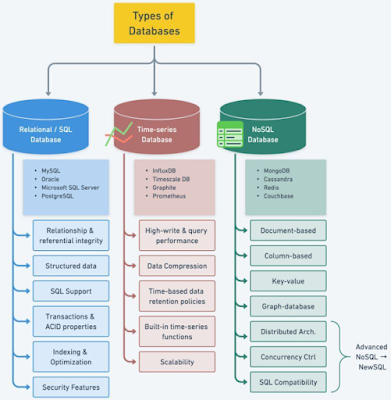Data Engineers work with numerous types of SQL databases. Today, I'd like to give some information about the various categories and their real-world uses.
They excel in structured data management, which makes them an excellent choice for transactional systems such as e-commerce platforms. Examples are SQL Server, MySQL, PostgreSQL, OracleDB.
NoSQL Databases:
They are used in power applications such as social media platforms and IoT systems, and are ideal for managing enormous volumes of unstructured or semi-structured data. Examples are MongoDB, Cassandra, DynamoDB
Columnar Databases:
Columnar databases expertise is in performing analytical queries on massive datasets. They are an essential component of data warehousing for analytics-driven organisations. Examples are Amazon Redshift, Google BigQuery
Graph Databases:
Ideal for complicated relationship scenarios such as social networks, recommendation engines, and fraud detection systems. Examples are Neo4j, Amazon Neptune
Remember that SQL is the foundation of data-driven decision-making, and comprehending these database types offers up a world of data possibilities.




